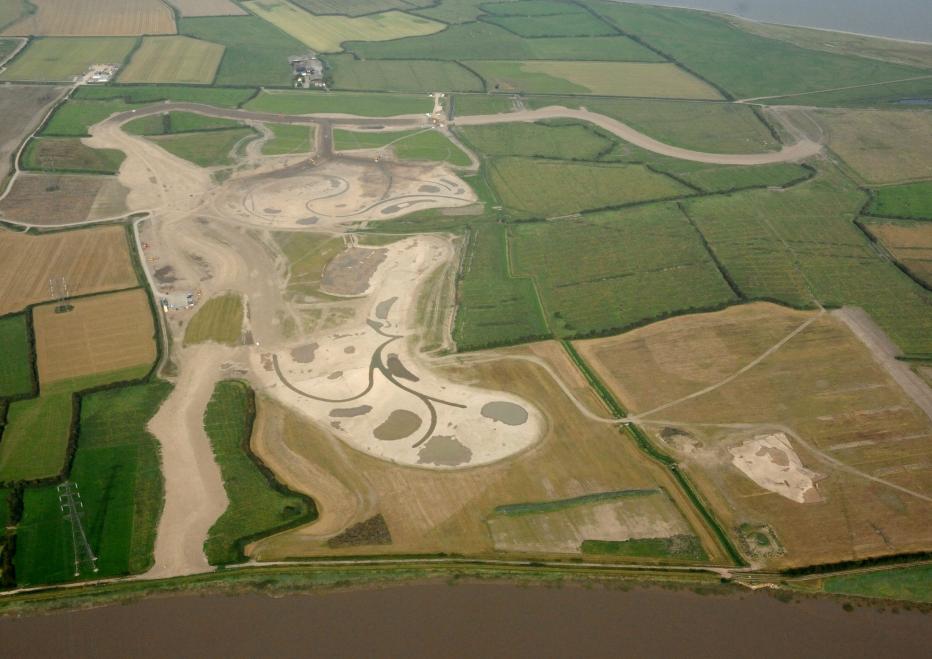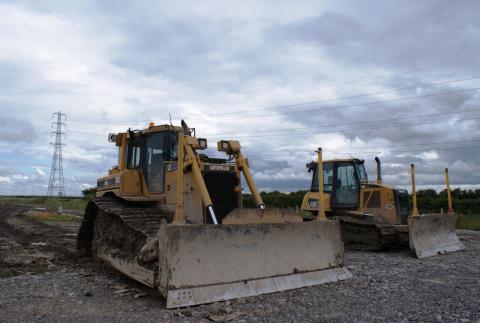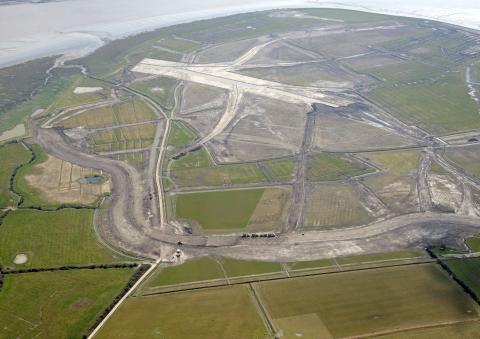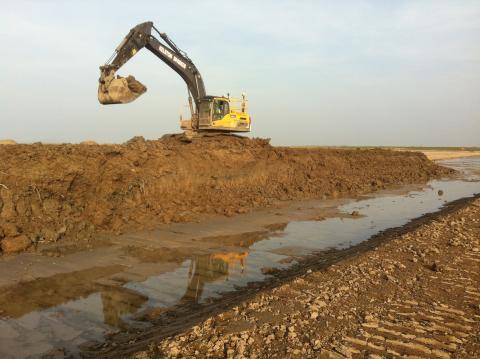
Image courtesy of the Environment Agency
What is managed realignment?
Used as a measure to deal with sea level rise and coastal erosion, managed realignment involves moving the existing line of defense landwards, creating new areas for coastal habitats. In low lying areas, managed realignment requires existing defenses to be breached or removed entirely and new defenses constructed further landwards. In some locations, where land elevations rise away from the coast, it may be possible to reduce the length of defenses by using the high land to limit flooding. The reintroduction of tidal waters to low lying areas leads to the creation of new intertidal habitats such as mudflats and saltmarshes.
The challenge
The Steart Peninsula, located in Somerset, U.K., is vulnerable to flooding from the sea. Defenses were deteriorating and it was not economical to maintain them. In the short to medium term, the village community was becoming isolated, with access to the ”mainland” being disrupted and the village itself increasingly becoming at risk from flooding. This project provided an opportunity to reduce the flood risk by providing improved defenses.
Jacobs was appointed as the lead designer for the development of this challenging and complex project, from options appraisal to detailed design and into construction supervision. The project aimed to achieve the cost-effective construction of managed realignment to create the conditions for a sustainable intertidal habitat and improved flood defenses.
The project, which was funded by the Environment Agency, was completed in 2014. Steart Marshes is one of the largest managed realignment and habitat creation projects ever carried out in the U.K. The project transformed 477 hectares (1,179 acres) of the Steart Peninsula into a range of wildlife rich habitats. At the same time the project improved flood defenses, public access and community involvement.
-

Image courtesy of Jacobs
-

Image courtesy of the Environment Agency
-

Image courtesy of Jacobs
The solution and our role
Jacobs was chosen as we have over 25 years of experience planning and designing nature-based solutions that restore coastal habitats. In the U.K., we have assessed more than 400 realignment sites and delivered nearly 1,500 ha (3,700 acres) of habitat, with more to follow.
As lead consultant and being involved in all aspects of the project, we carried out an early appraisal of options, developed feasibility designs, business cases and the detailed designs, supervised the construction and continued to monitor the schemes once it was implemented.
We undertook the necessary environmental assessments, carried out detailed hydrodynamic modelling of water movements and secured various consents and permissions needed for the successful completion of the project. We also supported the Environment Agency with stakeholder consultation activities. The construction was led by Kier Infrastructure on behalf of Team Van Oord and the project was completed to program, despite one of the wettest winters on record leading to challenging ground conditions. Following its opening, the site has developed to provide habitat for a rich mix of wetland wildlife including otters, egrets, owls, waders and wildfowl.
Steart Marshes today
Today, managed by the Wildfowl and Wetland Trust, Steart Marshes is providing us with a natural laboratory to investigate the ability of saltmarshes to offset climate change. This ability arises from the growth of saltmarsh vegetation and the accumulation of sediment. These processes remove and trap large amounts of carbon dioxide from the atmosphere (up to 40 times more carbon per unit than rainforests). The potential for carbon captured by coastal ecosystems—known as blue carbon—to contribute to net zero ambitions through processes like saltmarsh restoration, is currently attracting significant interest.
Working with Manchester Metropolitan University, our investigations showed that in the first four years the scheme trapped carbon at a rate 35 times higher than commonly reported in the literature. Importantly, the carbon trapped far outweighed the carbon emitted during construction, making the area a net sink. These scientific results are the first step in understanding the carbon-offsetting potential of restored saltmarshes.
Jacobs is currently involved in multiple ongoing studies which will help us establish whether U.K. saltmarshes have good potential to be used to offset carbon emissions. These studies involve developing best practices and guidance for carbon accounting (carbon codes), measuring carbon storage at other restored marshes, and scoping out the evidence gaps that need filling over the coming years. Together, these studies could potentially pave the way for significant investment in the restoration of our coastal ecosystems to help tackle climate change.
“A growing number of organizations are turning to nature-based solutions to help them achieve their net zero targets as well as deliver on their environmental, social and governance (ESG) goals. The restoration of saltmarshes, such as Steart, can help achieve these goals, coupled with the direct benefits of climate resilience and flood protection.”












































